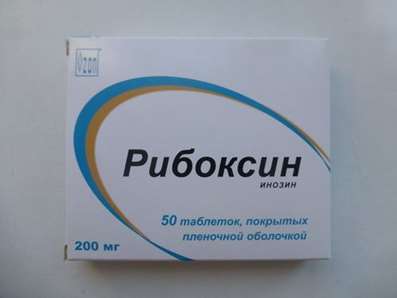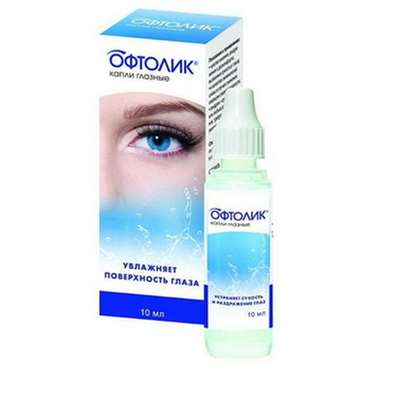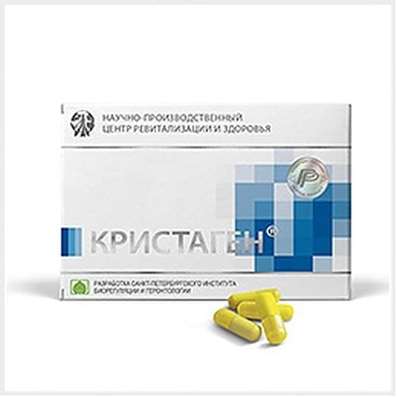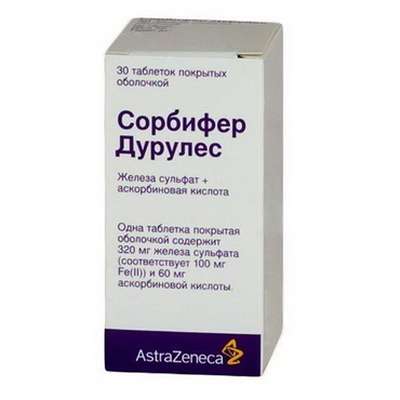Instruction for use: Clemastine
I want this, give me price
The Latin name of the substance Clemastine
Clemastinum (genus. Clemastini)
Chemical name
[R- (R *, R *)] - 2- [2- [1- (4-Chlorophenyl) -1-phenylethoxy] ethyl] -1-methylpyrrolidine (as fumarate)
Gross formula
C21H26ClNO
Pharmacological group
H1-Antihistamines
The nosological classification (ICD-10)
D69.0 Allergic Purpura: Anaphylactoid Purpura; Allergic vasculitis; Vasculitis hemorrhagic; Hemorrhagic vasculitis; Capillarotoxicosis; Purpura anaphylactic; Purpura anaphylactoid; Shenlaine-Henoch disease or purpura (primary) (rheumatic); Shenlaine-Genocha syndrome; Purple hemorrhagic Genocha
J30 Vasomotor and allergic rhinitis: Allergic rhinopathy; Allergic rhinosinusopathy; Allergic diseases of the upper respiratory tract; Allergic rhinitis; Allergic rhinitis seasonal; Vasomotor runny nose; Prolonged allergic rhinitis; All-year-round allergic rhinitis; All-year allergic rhinitis; Year-round or seasonal allergic rhinitis; All-the-year-round rhinitis of an allergic nature; Rhinitis vasomotor allergic; Exacerbation of pollinosis in the form of rhinoconjunctival syndrome; Acute allergic rhinitis; Edema of the nasal mucosa; Edema of the nasal mucosa; Edema of the mucous membrane of the nasal cavity; Swelling of the nasal mucosa; Swelling of the nasal mucosa; Pollinosis; Permanent allergic rhinitis; Rhinoconjunctivitis; Rhinosinusitis; Rhinosinusopathy; Seasonal allergic rhinitis; Seasonal allergic rhinitis; Hay rhinitis; Chronic allergic rhinitis; Allergic diseases of the respiratory tract
L20 Atopic dermatitis: Allergic diseases of the skin; Allergic skin disease noninfectious etiology; Allergic skin disease etiology nemikrobnoy; Allergic skin diseases; Allergic skin lesions; Allergic reactions on the skin; atopic dermatitis; Allergic dermatosis; Allergic diathesis; Allergic itching dermatosis; Allergic skin disease; Allergic skin irritation; allergic Dermatitis; atopic Dermatitis; allergic dermatoses; exudative diathesis; Itchy atopic eczema Itchy allergic dermatosis; Allergic skin disease; Cutaneous allergic reaction to drugs and chemicals; Cutaneous reactions to medications; Skin and allergic disease; Acute eczema; common neurodermatitis; Chronic atopic dermatitis; Exudative diathesis
L23 Allergic contact dermatitis: Allergic dermatitis;Purulent allergic dermatopathies; Contact allergic reaction; Contact allergic dermatitis; Contact allergic dermatitis; Photoallergic contact dermatitis
L29 Itching: Itching with partial obstruction of the biliary tract; Dermatitis itchy; Dermatosis with persistent itching; Other itching dermatoses; Itching dermatoses; Itching allergic dermatosis; Itching dermatitis; Itching dermatosis; Itching itch; Excruciating itching; Severe itching; Endogenous itching; Skin itching with dermatosis; Restricted itchy dermatitis; Itching of the skin; Itchy scalp; Itching eczema
L30.9 Unspecified Dermatitis: Allergic dermatoses complicated by a secondary bacterial infection; Anal eczema; Bacterial maturation; Varicose Eczema; Venous dermatitis; Inflammation of the skin; Inflammation of the skin upon contact with plants; Inflammatory Skin Disease; Inflammatory Skin Diseases; Inflammatory Skin Diseases; Inflammatory skin reactions; Inflammatory processes of the skin; Hypostatic dermatitis; Fungal Eczema; Fungal dermatosis; Dermatitis; Dermatitis is stagnant; Dermatitis and eczema in the anal area; Dermatitis acute contact; Perianal dermatitis; Dermatosis; Dermatosis of the scalp; Dermatosis of psoriasis; Dermatosis with persistent itching; Dermatoses; Dermatoses itchy; Other itching dermatoses; Significant eczematous manifestations; Itching with dermatoses; Itching eczema; Itching dermatoses; Itching dermatitis; Itching dermatosis; True eczema; Skin reaction to insect bites; Skin itching with dermatosis; Constitutional eczema; Weeping eczema; Drowsing inflammatory skin disease; Dying Infectious-Inflammatory Skin Disease; Non-allergic dermatitis; Nummular eczema; Acute contact eczema; Acute inflammatory skin disease; Acute dermatosis; Acute severe dermatosis; Perianal dermatitis; Superficial dermatosis; Subacute Contact Eczema; Simple dermatitis; Occupational dermatitis; Psychogenic dermatosis; Bubble dermatitis of newborns; Pustular eruptions; Irritation and redness of the skin; Low-flammable eczema; Dry atrophic eczema; Dry eczema; Toxic dermatitis; Ear eczema like dermatitis; Chronic eczema; Chronic dermatosis; Chronic dermatosis; Chronic common dermatosis; Scaly papular dermatosis; Eczema; Eczema anal region; Eczema of the hands; Eczema Contact; Eczema lichenized; Eczema Nummular; Eczema acute; Eczema acute contact; Eczema subacute; Eczematous dermatitis; Eczema-like rashes; Ecome exogenous; Endogenous eczema; Gluteal dermatitis; Limited itching dermatitis
L50 Urticaria: Idiopathic chronic urticarial; Injury Urticaria; Chronic urticarial; Hives of the newborn
T78.2 Anaphylactic shock, unspecified: Anaphylactic shock; Anaphylactoid reaction; Anaphylactoid shock; Anaphylactic shock; Anaphylactic reactions; Anaphylactic shock to drugs
T78.3 Angioedema: Edema Quincke; Laryngeal exacerbation with angioneurotic edema; Recurrent angioedema; Allergic edema; Recurrent swelling of Quincy
T78.4 Unspecified Allergy: Allergic reactions to insulin; Allergic reactions to insect stings; Allergic reactions similar to systemic lupus erythematosus; Allergic diseases; Allergic diseases of mucous membranes; Allergic diseases and conditions resulting from increased release of histamine; Allergic diseases of mucous membranes; Allergic symptoms; Allergic symptoms in the mucous membranes; Allergic reactions; Allergic reactions caused by insect bites; Allergic reactions; Allergic conditions; Allergic laryngeal edema; allergopathy; allergic conditions; Allergy; House dust allergy; Anaphylaxis; Cutaneous reactions to medications; Skin reaction to insect stings; Cosmetic allergy; Drug allergy; Acute allergic reaction; Laryngeal edema allergic genesis and background radiation; Food and drug allergy
T80.6 Other serum reactions: Serum disease; Allergic reaction like serum sickness; Serous disease accelerated
Y40-Y59 Drugs, medicines and biological substances that cause adverse reactions during therapeutic use
CAS Code
15686-51-8
Characteristics of the substance Clemastine
Ethanolamine derivative. Crystalline powder, colorless or slightly yellow, practically odorless.
Pharmacology
Pharmacological action - antiallergic, antihistamine, antipruritic, antiexudative.
It blocks histamine H1 receptors. It prevents the development of vasodilation and contraction of smooth muscles, induced by histamine. Reduces the permeability of capillaries, inhibits exudation and formation of edema, reduces itching. It blocks cholinergic receptors in the central nervous system and peripheral tissues, has a moderate sedative effect, exhibits local anesthetic activity.
According to the results of experimental studies, it has no carcinogenic, mutagenic and teratogenic effects. At a dose 312 times the recommended therapeutic dose for adults, unfavorable effect on the fertility of rats.
After intake, absorbed almost completely. Cmax in blood plasma is achieved within 2-4 hours, the maximum effect develops after 5-7 hours. Binding to plasma proteins is 90-95%. Passes through GEB, penetrates into breast milk. Metabolised in the liver. It is excreted in 2 phases: T1 / 2 of the first phase - 3,6 ± 0,9 hours, the second - 37 ± 16 hours Excreted in the urine, mainly in the form of metabolites (45-65%). The duration of action is 8-12 hours (in some cases up to 24 hours).
Update of information
Effect on the fertility of the substance Clemastine
An in vivo study was conducted in which the effect of clemastine on fertility was studied. The administration of clemastine to rats inside at a dose that exceeded the dose for an adult by 312 times revealed a decrease in mating ability in males. However, when klemastin was administered to rats at a dose exceeding the dose for an adult human 156-fold, this effect was not detected.
Carcinogenicity and mutagenicity of the Clemastine substance
The study of the carcinogenic ability of clemastine was carried out in in vivo studies in rats and mice. Clemastin was injected into the rats for two years at a dose of 84 mg / kg (which exceeds the 500-fold dose of clemastine for an adult) and mice for 85 weeks at a dose of 206 mg / kg (1300 times the dose of clemastine for Adult person). No carcinogenic activity of clemastine was detected.
There have been no special studies aimed at studying the mutagenic activity of clemastine.
The teratogenicity of the Clemastine substance
The study of teratogenicity of clemastine was carried out during in vivo studies in rats and rabbits. Clemastin was administered to rats and rabbits in doses exceeding 312 and 188 times, respectively, the dose for an adult. No teratogenic effects of clemastine were detected.
Application of substance Clemastine
For oral administration: urticaria, serum sickness, hemorrhagic vasculitis, rhinitis (allergic, vasomotor), pollinosis, itchy skin, itchy dermatoses, contact dermatitis, eczema (acute, chronic), acute iridocyclitis, drug exanthema, allergic reactions due to insect bites.
For parenteral use: angioedema, anaphylactic or anaphylactoid shock (complex therapy), prevention of allergic and pseudoallergic manifestations (use of radiocontrast agents, blood transfusion, administration of histamine).
Contraindications
Hypersensitivity, children under 1 year of age (syrup and injections) or up to 6 years (tablets), pregnancy, breast-feeding.
Additional information on contraindications to the use of clemastine
Do not use H1-antihistamines, including clemastine, for the treatment of diseases associated with the defeat of the lower respiratory tract, in particular, for relief of attacks of bronchial asthma. Do not use them in case of hypersensitivity to klemastin or to other H1-antihistamines with a similar chemical structure.
Restrictions
Closed-angle glaucoma, stenosing gastric ulcer, obstructive phenomena in pyloric and duodenal parts of the gastrointestinal tract or in the neck of the bladder, prostatic hypertrophy accompanied by urinary disorders.
Application in pregnancy and breastfeeding
Contraindicated in pregnancy.
The action category for fetus by FDA is B.
For the duration of treatment, breastfeeding should be stopped.
Update of information
Additional information on the use of lactation substance Clemastine
Despite the lack of data on the quantitative relationship between the doses of H1-antihistamines taken and their concentrations in breast milk, the possibility of excretion of diphenhydramine, pyrilamine and tripelenamine with breast milk was qualitatively identified.
Given the potential risks associated with the development of toxic effects of clemastine in infants whose mothers are prescribed H1-antihistamines, stop taking the drug during breastfeeding or stop breastfeeding for the duration of treatment.
Additional information on the use of Clemastin during pregnancy
There have not been sufficient controlled clinical studies of clemastine in the form of syrup in pregnant women.
Clinical use of clemastine in pregnant women does not allow us to draw definitive conclusions regarding the possible adverse effects of clemastine on the developing fetus. The use of clemastine in pregnant women is possible only in case of emergency.
Side effects of the substance Clemastine
From the nervous system and sensory organs: sedation, weakness, fatigue, inhibition, headache, dizziness, drowsiness, impaired coordination of movements, rarely - stimulating effect (usually in children): anxiety, irritability, agitation, nervousness, insomnia, Hysteria, euphoria, tremors, convulsions; Paresthesia, neuritis, blurred vision, diplopia, acute labyrinthitis, tinnitus.
On the part of the intestine: nausea, dry mouth, gastric discomfort, rarely - pain in epigastrium, constipation, in some cases - anorexia, vomiting, diarrhea.
On the part of the respiratory system: thickening of the bronchial secretion and difficulty in withdrawing sputum, a feeling of pressure in the chest, respiratory failure, nasal congestion.
From the cardiovascular system: hypotension (usually in the elderly), palpitations, tachycardia, extrasystole; Hemolytic anemia, thrombocytopenia, agranulocytosis.
From the genitourinary system: very rarely - difficulty separating the urine, urinary retention, increased frequency of urination, changes in menstrual function.
Allergic reactions: very rarely - hives, skin rash, with / in the introduction - dyspnea, bronchospasm, anaphylactic shock.
Other: photosensitization.
Update of information
Additional information about the side effects of Clemastine
The most common side effect associated with the use of clemastine is transient drowsiness. In some cases, the withdrawal of the drug is required.
There may be increased sweating, chills.
Interaction
Potentsirovan action of neuroleptics, alcohol, sedatives, hypnotics, anesthesia and other drugs, depressing the central nervous system, the effect of holinoblokatorov. Incompatible with MAO inhibitors (prolong and strengthen cholinolytic action).
Overdose
Symptoms: mydriasis, lack of pupillary reaction to light, dry mouth, red face, fever, cyanosis, agitation, hallucinations, impaired coordination of movements, ataxia, athetosis, tremor, hyperreflexia, tonic-clonic convulsions, depression, depression of cardiac activity And respiration (possible fatal outcome). In adults, CNS depression, drowsiness, collapse, convulsions, coma.
Treatment: Induction of vomiting, the appointment of salt laxatives (with ingestion); Symptomatic and supportive therapy: with fever in children it is possible to use cooling wiping, in case of hypotension - the introduction of vasoconstrictive drugs, for cramping convulsions - diazepam or short-acting barbiturates, if necessary - physostigmine, IVL; Monitoring of vital functions.
Routes of administration
Inside.
Precautions for the substance Clemastine
With caution appoint patients with hyperthyroidism and diseases of the cardiovascular system, incl. Arterial hypertension. For the period of treatment should stop drinking alcohol. Careful monitoring of children and elderly patients is necessary (sensitivity to antihistamines is increased). At the beginning of treatment should not be used during work drivers of vehicles and people whose profession is associated with increased concentration of attention; In the future - the degree of restriction is determined by the individual tolerance of the drug.
Update of information
Additional information on the use of Clemastin substance in children
The safety and efficacy of clemastine in the form of tablets in children younger than 12 years is not established.
The safety and efficacy of clemastine in the form of a syrup is established in children 6-11 years old. The definition of safety and tolerability of clemastine was carried out in clinical trials involving children aged 6-11 years and its safety was confirmed in the dose range of 0.75-2.25 mg.
In children, an overdose of H1-antihistamines can lead to the development of hallucinations, seizures and death. Symptoms of klemastin overdose may include mydriasis, lack of pupillary response to light, dry mouth, redness of the face, fever, cyanosis, agitation, hallucinations, impaired coordination of ataxia, athetosis, tremor, hyperreflexia, tonic-clonic convulsions, depression, cardiac oppression And breathing.
Special instructions
It is necessary to exclude the possibility ofintraarterially introduction. The ampoule solution contains ethanol. To prevent distortion of skin scarification test results for allergens, the drug should be discontinued 72 hours before allergy testing.

 Cart
Cart





